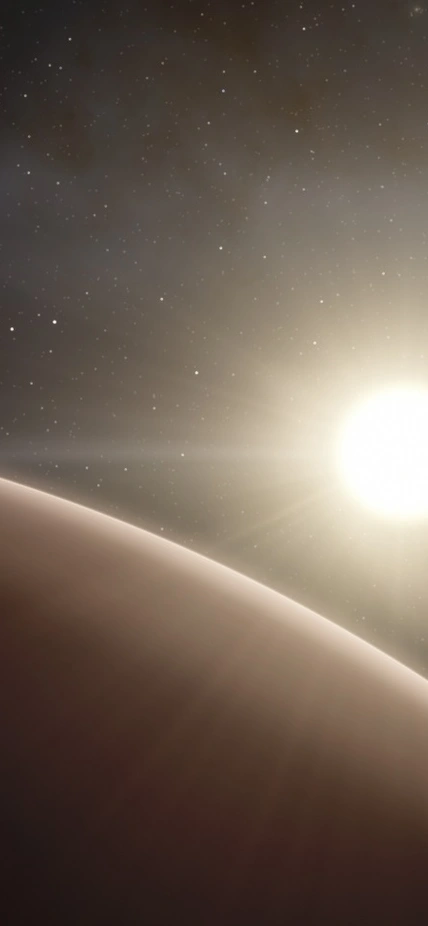Pasadena, CA— A surprising analysis of the composition of gas giant exoplanets and their host stars shows that there isn’t a strong correlation between their compositions when it comes to elements heavier than hydrogen and helium, according to new work led by Carnegie’s Johanna Teske and published in The Astronomical Journal. This finding has important implications for our understanding of the planetary formation process.
In their youths, stars are surrounded by a rotating disk of gas and dust from which planets are born. Astronomers have long wondered how much a star’s makeup determines the raw material from which planets are constructed—a question that is easier to probe now that we know the galaxy is teeming with exoplanets.
“Understanding the relationship between the chemical composition of a star and its planets could help shed light on the planetary formation process,” Teske explained.
For example, previous research indicated that the occurrence of gas giant planets increases around stars with a higher concentration of heavy elements, those elements other than hydrogen and helium. This is thought to provide evidence for one of the primary competing theories for how planets form, which proposes that gas giant planets are built from the slow accretion of disk material until a core about 10 times Earth’s mass is formed. At this point, the solid baby planetary interior is able to surround itself with helium and hydrogen gas, birthing a mature giant planet.
“Previous work looked at the relationship between the presence of planets and how much iron exists in the host star, but we wanted to expand that to include the heavy element content of the planets themselves, and to look at more than just iron,” explained co-author Daniel Thorngren, who completed much of the work as a graduate student at UC Santa Cruz and is now at the Université de Montréal.
Teske, Thorngren and their colleagues—Jonathan Fortney of UC Santa Cruz, Natalie Hinkel of the Southwest Research Institute, and John Brewer of San Francisco State University—compared the bulk heavy element content of 24 cool, gas giant planets to the abundances of “planet-forming elements” carbon, oxygen, magnesium, silicon, iron, and nickel in their 19 host stars. (Some stars host multiple planets.)
 They were surprised to find that there was no correlation between the amount of heavy elements in these giant planets and the amount of these planet-forming elements in their host stars So how can astronomers explain the established trend that stars rich in heavy elements are more likely to host gas giant planets?
They were surprised to find that there was no correlation between the amount of heavy elements in these giant planets and the amount of these planet-forming elements in their host stars So how can astronomers explain the established trend that stars rich in heavy elements are more likely to host gas giant planets?
“Unraveling this discrepancy could reveal new details about the planet formation process,” explained Fortney. “For example, what other factors are contributing to a baby planet’s composition as it forms? Perhaps its location in the disk and how far it is from any neighbors. More work is necessary to answer these crucial questions.”
One clue may come from the authors’ combined results bundling the heavy elements into groupings that reflect their characteristics. The authors saw a tentative correlation between a planet’s heavy elements and its host star’s relative abundance of carbon and oxygen, which are called volatile elements, versus the rest of the elements included in this study, which fall into the group called refractory elements. These terms refer to the elements’ low boiling points—volatility—or their high melting points—in the case of the refractory elements. Volatile elements may represent an ice-rich planetary composition, whereas refractory elements may indicate a rocky composition.
Teske said: “I’m excited to explore this tentative result further, and hopefully add more information to our understanding of the relationships between star and planetary compositions from upcoming missions like NASA’s James Webb Space Telescope, which will be able to measure elements in exoplanet atmospheres.”
Top Image Caption: Artist’s conception of Kepler-432b, courtesy of MarioProtIV/Wikimedia Commons.
Bottom Image Caption: An artist’s conception of a young star surrounded by a primordial rotating disk of gas and dust from which planets can form. Illustration is by Robin Dienel, courtesy of the Carnegie Institution for Science.
